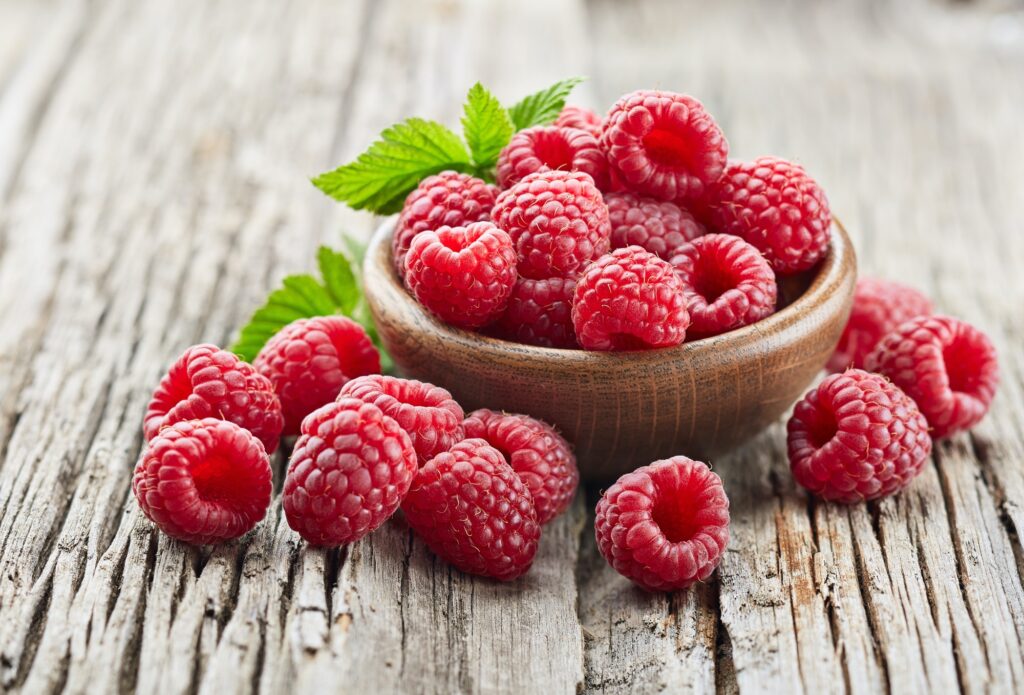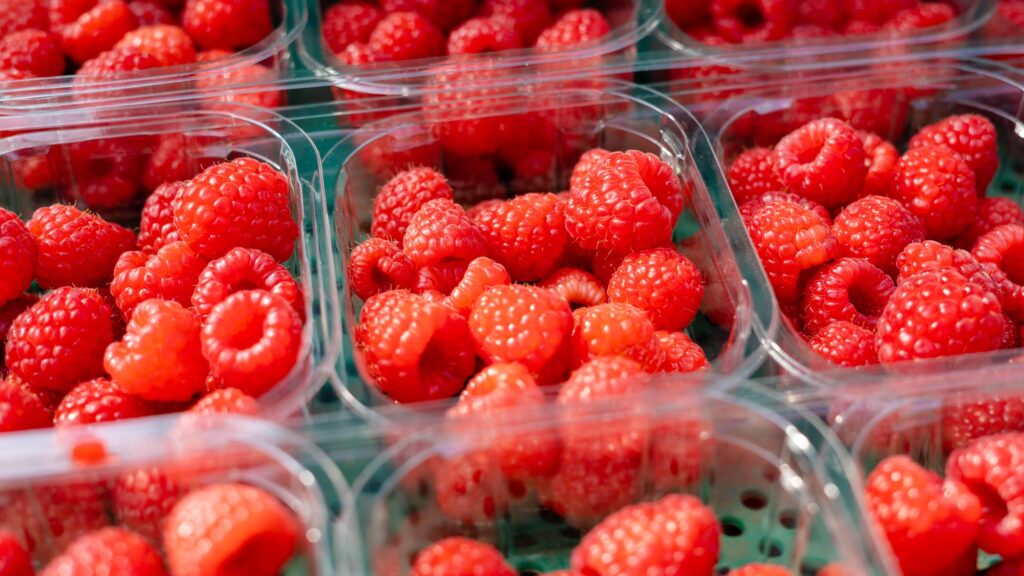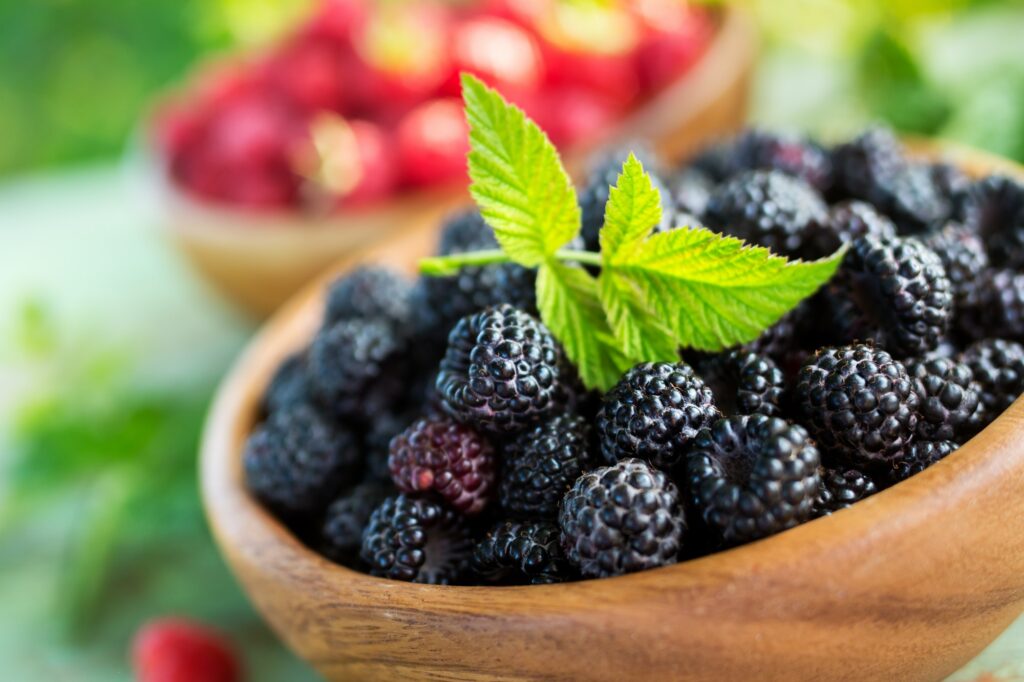11 Interesting Facts About Raspberry

Introduction
Raspberries are a beloved berry, known for their sweet yet tart taste and vibrant red color. But there’s more to these fruits than meets the eye. Here
Raspberries belong to the rose family and are an aggregate fruit, meaning they are composed of many smaller individual drupelets. They grow on a bushy vine with prickly stems and come in a range of colors from red, black, purple, orange, yellow, and even white.
While raspberries are nutritious, delicious, and have a long history, they also have some surprising facts about their origins, growing conditions, uses, and more. Read on to uncover 11 interesting details about this juicy, antioxidant-rich fruit.
Interesting Facts About Raspberry

1. Raspberries Are Not Berries
Botanically speaking, raspberries are not true berries. True berries only have one ovary and one seed, while raspberries have multiple ovaries and seeds. Other fruits that are not botanical berries include strawberries, blackberries, and mulberries.
2. Russia Is the Leading Producer of Raspberries
Russia tops the list of global raspberry production, growing about 20% of the world’s raspberries. Other major producers include Poland, Mexico, the United States, and Serbia.
3. Raspberries Are Highly Nutritious

One cup of raspberries contains 64 calories and is an excellent source of vitamin C, manganese, and fiber. Raspberries also contain high levels of anthocyanins, powerful antioxidants that give raspberries their red pigment. The ellagic acid in raspberries has anti-inflammatory and anti-cancer properties.
4. There Are Over 200 Raspberry Varieties
While red is the most common, raspberries come in a rainbow of colors including black, purple, orange, yellow, and white. Popular varieties include Heritage, Autumn Bliss, Caroline, Fall Gold, and Golden Everest. The loganberry is a hybrid of blackberry and raspberry1.
5. Raspberries Are Not Berries
Raspberries are not botanically classified as true berries. True berries only have one ovary and one seed, while raspberries have multiple ovaries and seeds. Other fruits that are not berries include strawberries, blackberries, and mulberries.
6. Raspberries Are Sometimes Called Brambles

Raspberries are part of the plant genus Rubus, which also includes blackberries. Rubus plants have thorny stems, and both raspberries and blackberries are referred to as “brambles” in some regions.
7. Raspberry Leaves Are Used to Make Tea
The leaves of raspberry plants are used to make an herbal tea that is thought to help strengthen the uterus, regulate menstrual cycles, and ease childbirth. Raspberry leaf tea has a pleasant, mild flavor.
8. Raspberries Are Hollow Fruits
Unlike blackberries which have a solid core, raspberries are hollow fruits. They are made of around 100 drupelets which surround a hollow central cavity. Each drupelet contains one small seed.
9. Raspberries Are Sometimes Called Hindberries
In old English, raspberries were known as “hindberries”, while blackberries were called “brambleberries”2. The origin of “hindberry” may be related to the fact that raspberries ripen later in the summer than blackberries.
10. Raspberries Have Been Used as Dye

In medieval times, raspberries were used to dye clothing. The roots of raspberry plants were boiled to create a purple or crimson dye, though it was not colorfast. Raspberry juice can also be used as an edible pink or red food coloring3.
11. Raspberries Are Grown in Protective Tunnels
To protect raspberries from rain, wind, insects, and birds, they are often grown in low tunnels covered with plastic sheeting or netting. This allows farmers to extend the raspberry growing season and increase yields.
FAQ Section: Raspberries
Which country is the largest producer of raspberries?
Russia is currently the largest producer of raspberries, with an annual harvest of approximately 182,000 tons.
Are raspberries a good source of nutrients?
Yes, raspberries are rich in vitamins and minerals. They provide 32% of the daily recommended intake of Vitamin C and manganese, as well as vitamins E and K, all in just 100 grams.
Can raspberries help with digestive health?
Definitely. Raspberries are high in fiber, with 8 grams per 100-gram serving. This helps promote weight loss, digestive regularity, and cardiovascular health.
Are frozen raspberries less nutritious than fresh raspberries?
Frozen raspberries might be more nutritious than fresh ones because they are frozen at peak ripeness, which helps preserve their vitamins and antioxidants.
What is the difference between raspberries and blackberries?
The main difference is in the core. When raspberries are picked, they release their core, leaving a hollow fruit, but blackberries keep their core intact.
Conclusion
Raspberries may seem like a common fruit, but they have some unique properties and a fascinating history behind them. Their hollow structure, multitude of seeds, and use as a natural dye are just a few of the interesting facts about this antioxidant-rich berry. With so many health benefits and their sweet-tart taste, it’s no wonder raspberries continue to be a beloved fruit worldwide.





